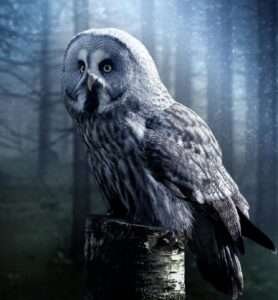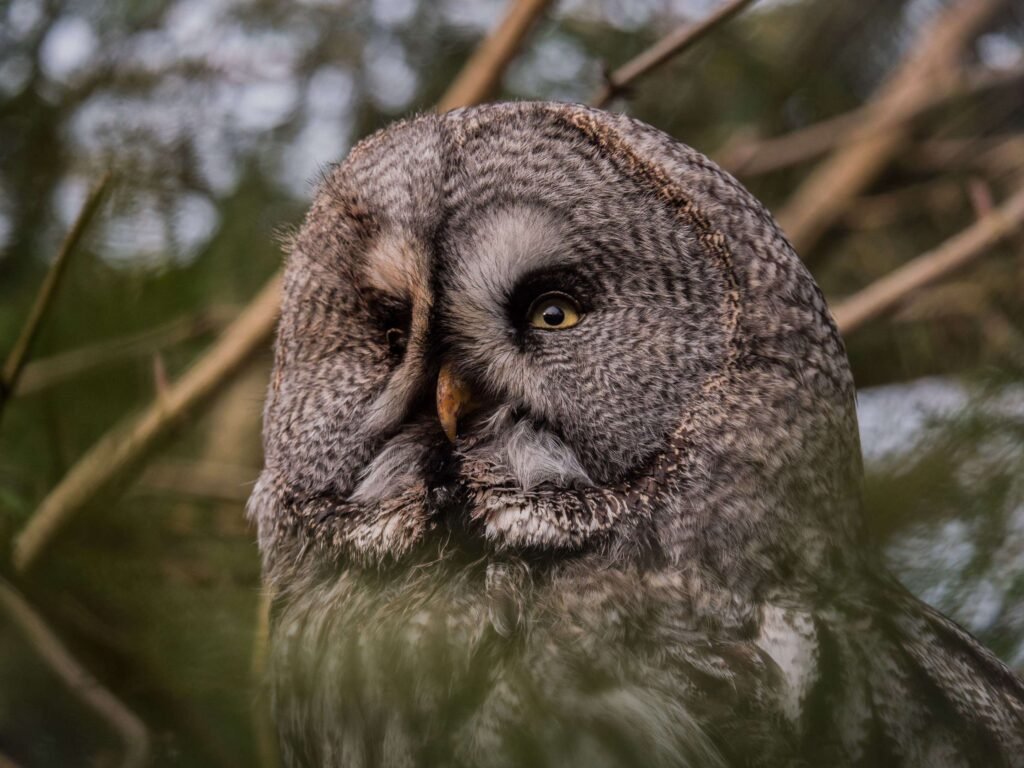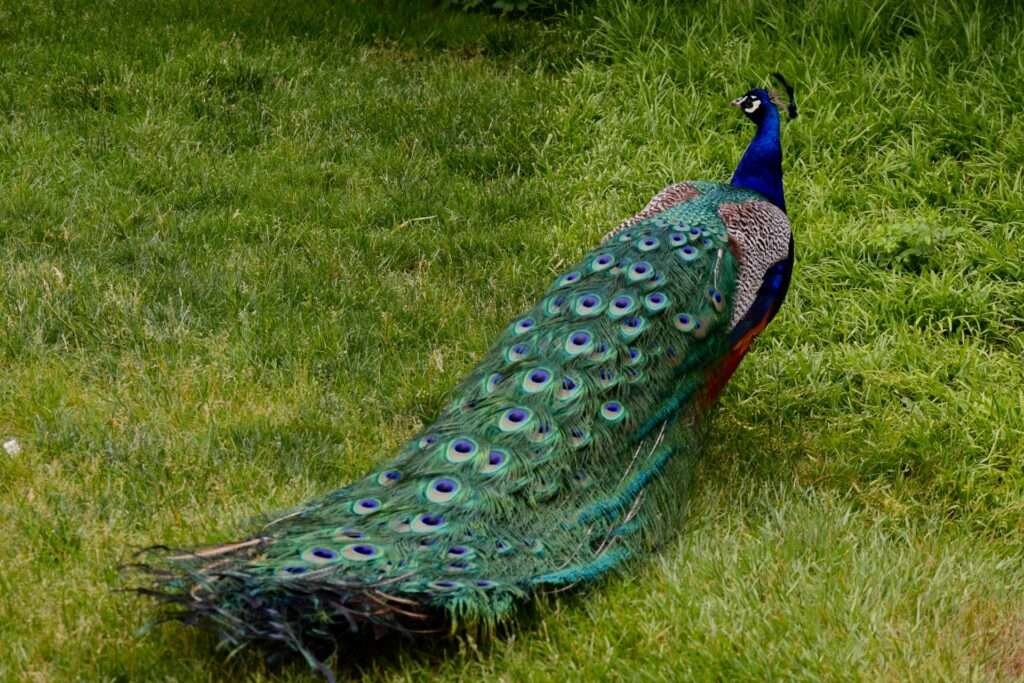Depending on species and environmental factors, owls typically live between 10 to 30 years. Some can even live past 30 years in captivity.
Owls are fascinating nocturnal birds of prey whose lifespan varies widely among species. They are known for their silent flight, distinctive calls, and incredible head-turning ability. These raptors can be found globally, from dense forest habitats to urban cityscapes, and they adapt well to diverse environments contributing to their longevity.
Their lifespan is influenced by several factors including food availability, predation pressure, and habitat conditions. Species like the Great Horned Owl are on a higher longevity scale, while smaller owls may have shorter life spans. Understanding an owl’s life expectancy helps conservation efforts and appreciates its vital role in ecological balance.
Average Lifespan Of Owls
Curiosity often leads us to ponder the lives of those creatures of the night, owls. Shall we delve into the years they grace our skies? Owls, fascinating and wise, live various spans depending on their species. In general, owls in the wild have shorter lives than those in captivity. Wild owls often live around 4 to 20 years. In contrast, those under human care may soar in age, up to 30 years or older. But what factors alter an owl’s lifespan?
Factors Affecting Lifespan
Several elements are pivotal in the longevity of these nocturnal birds:
- Species: Owl types vary in life expectancy.
- Habitat: Safety and food supply in an owl’s habitat are crucial.
- Health: Disease and injury can cut an owl’s life short.
- Threats: Predators and human activities pose significant risks.
Species can make a big difference. Larger owls, like the Great Horned Owl, may outlive smaller species, such as the Barn Owl. Habitat matters since owls with ample food and fewer threats tend to live longer. In healthy conditions, free from disease and injury, an owl’s health remains robust, securing a longer life. Lastly, threats from predators or accidents often caused by humans can drastically shorten their lives.
Protected environments, like sanctuaries, boost longevity by providing secure habitats. These sanctuaries also shield owls from the perils that wild owls may face every day.

Longest Living Owl Species
Owls captivate us with their mysterious presence and night-time antics. Yet, one question often soars through the minds of owl aficionados: How long can these winged wonders live? Among the varied owl species, certain feathered individuals outlast others. This section highlights the longest-living owl species, diving into the secrets behind their impressive lifespans.
Characteristics Of Long-lived Owls
Owls with remarkable longevity share common traits.
- Adaptability: They excel in adapting to changing environments.
- Diet: Their diverse diets help them thrive.
- Size: Generally, larger owl species tend to live longer.
- Reproduction: They often have fewer offspring, with a higher survival rate.
Let’s explore some fascinating examples.
| Owl Species | Average Lifespan | Lifespan in Captivity |
|---|---|---|
| Eurasian Eagle-Owl | 20 years | Up to 60 years |
| Great Horned Owl | 13 years | Up to 38 years |
Eurasian eagle owls stand out and have impressive lifespans. In the wild, they can live for about 20 years. However, when protected from predators and provided with a steady food supply, their lifespan can stretch dramatically, reaching up to 60 years in captivity.
Similarly, the Great Horned Owl has a noteworthy lifespan. In natural conditions, they average 13 years. Yet, with human care, they may live for over three decades, displaying the potential longevity of these captivating raptors.
Short-lived Owl Species
The animal kingdom has diverse wildlife, including the mysterious owls that captivate our imagination. Among these nocturnal hunters, some species live much shorter than their counterparts. Let’s explore the world of Short-Lived Owl Species and unearth the factors influencing their lifespans.
Reasons For Short Lifespan
A wild owl’s life is fraught with challenges that can cut its life short. These challenges are crucial to understanding conservation efforts and overall awareness. Here are the main reasons:
- Predation — Young owls are vulnerable to predators.
- Disease — Owls face risks from various diseases.
- Starvation — Food scarcity affects owl survival.
- Human activities — Habitat loss and collisions with vehicles are significant threats.
- Climate change — Weather patterns disrupt their living conditions.
Adaptations For Survival
The owl is a fascinating creature with various survival adaptations that allow it to live long and healthy lives. With proper care and environment, some owls can live up to 30 years or more. Let’s explore the unique adaptations that contribute to its longevity.
What Makes Baby Owls So Special?
Nocturnal Lifestyle
Owls have perfected survival at night. Their nocturnal habits keep them safe from predators. By hunting in darkness, they surprise their prey, which results in a higher success rate. Owls rest during the day when most dangers are asleep, which helps them avoid threats and conserve energy.
Silent Flight
Nocturnal predators like owls need to approach prey quietly. Silent flight is key. Owls have specialized feathers that muffle sound, allowing them to swoop down on prey unnoticed. The soft edges of their wings also reduce noise, giving them a stealth advantage.
Sharp Vision
Owls possess incredible vision, especially in low light. Their large eyes gather more light than human eyes. This adaptation guarantees peak performance in hunting. With sharp vision, they spot prey from a distance. Owls also have a wide field of view, essential for pinpointing prey in the dark.
Understanding Owl Legs: Structure and Function
Threats To Owl Lifespan
With their mystical presence, owls are as fascinating as they are critical to our ecosystems. These raptors live diverse lifespans and are affected by a range of threats. Several factors have emerged that endanger their existence. Understanding these threats is vital for the conservation of these majestic creatures. Let’s delve into the challenges they face in the wild.
Habitat Loss
Habitat loss stands as a prominent threat to owl populations worldwide. Rapid urban development, deforestation, and agriculture expansion strip away the natural homes of owls. Consequently, owls struggle to find suitable nesting sites and sufficient hunting grounds. This loss not only diminishes their numbers but also disrupts their natural behaviours.
Climate Change
The effects of climate change take a toll on the owl community. Warmer temperatures and changing weather patterns alter the habitat and food availability. Severe weather events can destroy nests and reduce the prey populations that owls depend on for survival.
- Shifts in breeding seasons
- Changes in migration patterns
- Increased frequency of extreme weather events
Predators
While owls are predators, they also face threats from other wildlife. Unnatural predators introduced into their habitats, such as feral cats and raccoons, pose significant risks. These predators often target eggs and young owlets, reducing the chances of young surviving to adulthood.
| Predator | Threat |
|---|---|
| Feral Cats | Egg and owlet predation |
| Raccoons | Nest invasion |
| Other Birds of Prey | Competition and predation |
Conservation Efforts
With their mysterious eyes and silent flight, owls mesmerize nature lovers worldwide. Yet, these fascinating birds face various threats leading to dwindling populations. Protecting owls involves several strategies to ensure their survival, and emphasizing conservation efforts is key to their future.
Protected Areas
Safe havens for owls matter greatly. Around the globe, governments and conservation groups work together to create protected areas. These regions safeguard vital habitats from destruction and create owl-friendly zones.
- Legal protections prevent habitat disruption within these areas.
- Eco-tourism supports local economies and encourages conservation.
- Monitoring activities help track owl populations and health.
Habitat Restoration
Restoring natural environments helps owls thrive. Efforts focus on areas where owls once lived but have since declined due to human activity.
- Plant native flora to attract prey and provide nesting sites.
- Remove invasive species that compete with owls for resources.
- Implement land management practices that maintain owl habitats.
Public Awareness
Educating people about owls makes a huge difference. Outreach programs raise awareness about owls’ importance and their dangers.
| Activity | Objective | Audience |
|---|---|---|
| Workshops | Teach owl conservation methods | Schools, communities |
| Media campaigns | Spread critical information | General public |
| Wildlife festivals | Showcase owl diversity and needs | Families, nature enthusiasts |
Real change starts with awareness. Engaging people leads to better advocacy and support for policies that benefit owls.
Frequently Asked Questions
How Old Is The Oldest Owl?
The oldest known owl fossil, “Ogygoptynx wetmorei”, is approximately 60 million years old.
Which Bird Lives The Longest?
The longest-living bird is the albatross, some reaching over 60 years old.
How Many Years Did Owl Live?
Owls typically live between 10 and 25 years in the wild, though lifespans can vary by species. With proper care, captive owls might reach up to 50 years old.
Can An Owl Be A Pet?
Owls are not ideal pets due to their specialized care and conservation concerns. They require complex permits for legal ownership and are not domesticated like dogs or cats.
Conclusion
Discovering owls’ lifespans reveals a captivating aspect of these mysterious creatures. While species and environmental factors vary, many owls enjoy a life stretching over a decade, some reaching 30 years. As we strive to protect their habitats, understanding and appreciating their longevity is key to ensuring these nocturnal birds continue to grace our skies for generations.




